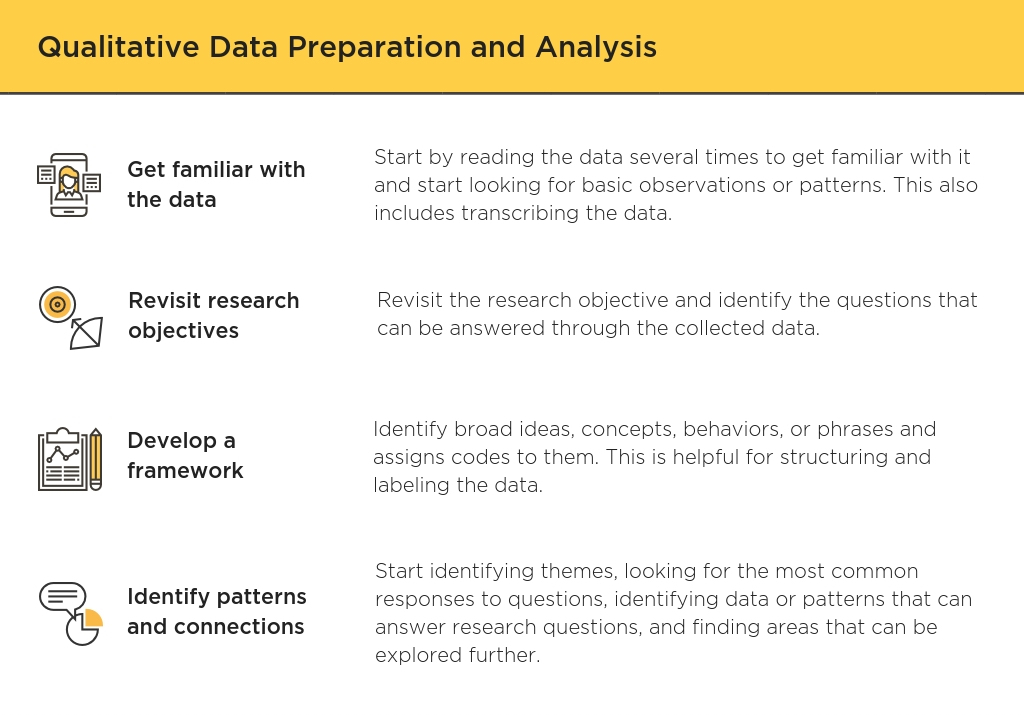

In qualitative methods, the researcher accepts that he/she is to some degree a co-creator of research results, so the results are not completely objective and reproducible. Qualitative methods such as interviews, ethnographic field studies, and (to some degree) usability tests are often more exploratory and seek to get a more in-depth understanding of the individual users’ or user group’s experiences, motivations, and everyday lives. Getting a sample of users who can represent the entire user population in a statistically meaningful way often requires many research participants. Best practice for quantitative methods is to collect objective measurements that are unbiased by the researcher’s hypotheses, presence, and personality. In quantitative methods such as surveys, analytics, and formal experiments, the researcher seeks to measure aspects of users and user behavior in a way that can be quantified and used for statistical analysis. User research methods are often divided into quantitative and qualitative methods. Qualitative User Researchĭifferent user research methods have different guidelines for best practice. Here, we'll consider the differences between qualitative and quantitative research and explain what the best practices are when you do qualitative user research. If you understand this, you can ensure that your own user research is truly relevant, you can evaluate the validity of other people’s research results, and you can explain the benefits of using a certain method to stakeholders. The first step in doing user research right is to understand best practices for the method you are using, and why best practice is, in fact, best practice. That's a waste of both your and your research participants’ time, and it’s bad for business.

You don’t want to waste your time doing research that does not truly represent your users’ opinions and behaviors.

If you are entering the course without a dataset, please let me know and we can make arrangements for you to have access to a qualitative dataset.No matter how big or small your user research project is, if you're going to do user research, you want to make sure you do it right. For use in the course, it should be textual written format in a language that you understand. The qualitative data may have been collected through a variety of data collection methods (e.g., individual in-depth interviews, focus group discussion, or observations). This course is best suited for students who have a qualitative data set that they are working to analyze toward a specific output (e.g., a publication or Masters thesis).
Qualitative data analysis best practices how to#
Throughout the course, students will learn how to use data analysis software (i.e., NVivo) to assist in the analysis process. In this process, you will learn a set of applied skills and tools (memo writing, coding, visualizing and matrices) that you can use to help you to identify patterns (or “themes”) in your data, and to synthesize, interpret and present your data in a systematic and rigorous process. While this course will draw from many traditions of qualitative analysis, it will have as its foundation the techniques of thematic analysis: a rapid, applied approach to qualitative data analysis that is well suited to the field of global health. We will approach qualitative data analysis as a science, while also recognizing and appreciating the art (and heart) that goes into the analytic process. The goal of this course is to unveil the mystery of qualitative analysis, by providing you with a toolset to move through data analysis. However, the process of turning qualitative data into insightful conclusions can sometimes feel like a mystery. Qualitative data can help to answer essential questions in the field of global health, and in turn can inform global health practice and policy.


 0 kommentar(er)
0 kommentar(er)
